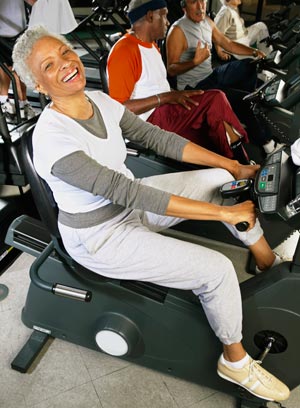For any diet to work, calories consumed need to be less than calories expended. Remember, it takes a 3500 calorie deficit to lose one pound of fat. That is, if you want to lose about a pound per week, you need to eat less and exercise more so that your net calorie intake is about 500 calories less per day than it is right now.
The best diets will advocate at least nine servings daily of a variety of fruits and vegetables – low-calorie foods that provide most of the body’s needed vitamins, minerals and phytochemicals that ward off infection and disease. Fiber-containing whole grains and calcium-rich low-fat dairy products should also be encouraged. If the diet relies primarily on a supplement to assure sufficient vitamins and minerals, it probably is not the healthiest choice.
Nutrition is only one component in making a long-term lifestyle change. Exercise not only speeds weight loss by increasing caloric deficit, but it also is essential in keeping the weight off.
To sell books and win over dieters who have “tried everything,” diet plans tend to make unbelievable claims that oftentimes are substantiated by dieters’ personal testimony. From promises to lose 8 to 13 pounds in the first two weeks of a diet to promotion of magic supplements, diets market themselves as so easy and effective that their irresistible – at first. But what comes off fast, comes on fast. You’re most likely to be successful in losing weight and keeping it off (the hardest part) if you aim for slow and steady with sustainable lifestyle changes.
The most negligent diet is one that prescribes the same plan to all people regardless of their health status and other individual factors. If you have a history and significant medial illness, such as (but not limited to) diabetes or heart disease, you should talk with your physician before starting a diet or exercise regimen.
While you may be able to scrape together enough money to begin an expensive weight loss program, you may not be able to sustain the cost for an extended period of time. Plan ahead and assess your readiness to change and commit to a program before making huge lifestyle adjustments and financial sacrifices
While you may be able to scrape together enough money to begin an expensive weight loss program, you may not be able to sustain the cost for an extended period of time. Plan ahead and assess your readiness to change and commit to a program before making huge lifestyle adjustments and financial sacrifices
Social support is key to successful weight loss. If a diet requires you to eat a different food than the rest of the family, chances are good that you won’t be successful on the diet. If your family is not supportive and committed to helping you make the healthy change, you are probably going to struggle.
Long-term adherence to a program, which means a lifestyle change, is the most important factor for lifelong weight-loss success. The specific diet really doesn’t matter. A few years ago, researchers conducted a one year trial to assess the adherence rate and effectiveness of Atkins, Ornish, Weight Watchers and the Zone diets. They found that all of the diets modestly reduced body weight and cardiovascular risk factors and for each of the diets, people who adhered to the diet had greater weight loss and risk factor reductions. Of course, most of the study participants struggled with adherence, which overall was poor for all of the diets. This just drives home the point once again: permanent lifestyle change, not a quick fix time-bound diet, is essential for successful weight loss and subsequent improved health.
 If you’ve ever thought you aren’t standing as straight and tall as you once did, find walking up a flight of stairs to be a strain at times, or you groan when reaching for the arms of a chair as you slowly get up from sitting, you aren’t alone.
If you’ve ever thought you aren’t standing as straight and tall as you once did, find walking up a flight of stairs to be a strain at times, or you groan when reaching for the arms of a chair as you slowly get up from sitting, you aren’t alone.